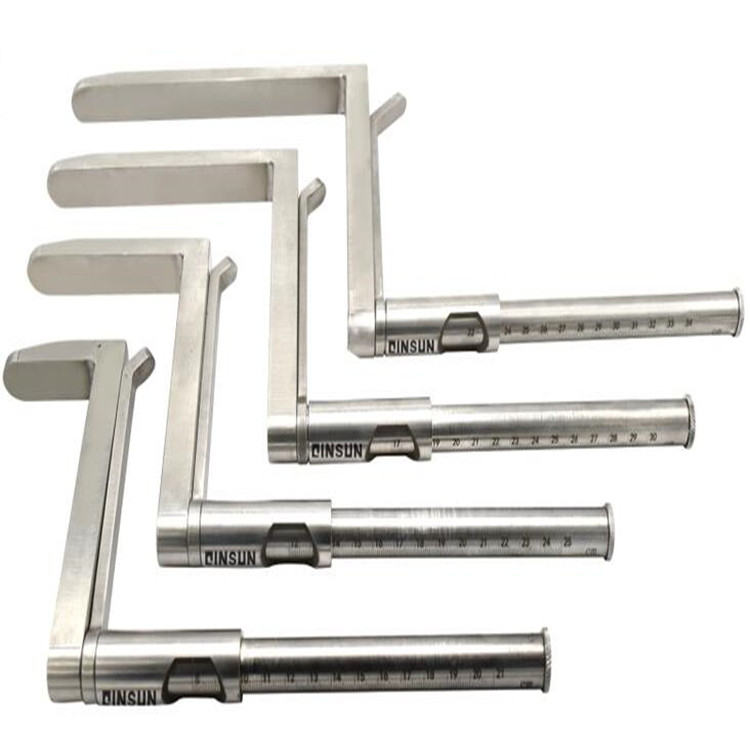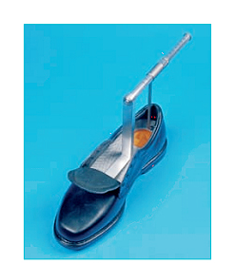
NewsInformation Center
G408 Internal Shoe Size Gauge Operation Procedure
2023/11/13
Internal Shoe Size Measuring Instrument is a device used to measure the size of the inner space of shoes, G408 Internal Shoe Size Measuring Instrument has 4 models, including size 11-14 for adults and size 3-7 for children, the device has a simple structure and is used to measure the shoe size.
The following are the general operating procedures for using the Internal Shoe Size Gauge:

1. Prepare the shoes: Select the shoes to be measured and make sure they are clean, neat and free from any foreign objects or gaskets. Make sure there is no residue on the inside of the shoe for accurate measurement.
2. Install the shoes: Place the shoes in the proper position on the internal shoe size measuring device. Normally, the heel of the shoe should be aligned with the baseline of the gauge and the front of the shoe should be in contact with the front of the gauge.
3. Measurement: Initiate the measurement process according to the gauge's instructions. This may involve pressing a button, turning a handle, or operating by touching a screen. Depending on the equipment, more than one measurement may need to be taken to arrive at an accurate internal measurement.
4. Record results: Record the results of the measurements as indicated by the gauge. These results usually include dimensional data such as the length, width, and height of the shoe.
Please note that the exact procedure may vary depending on the model of the internal shoe size measuring device. Therefore, before using a specific model, be sure to refer to the device's operating manual or related instructions for proper operating procedures and precautions. In addition, if you need detailed operating instructions, it is recommended to consult the equipment manufacturer or relevant professionals for support and advice.
How to choose a reliable Internal Shoe Size Gauge manufacturer?
1. Reliability and Accuracy: Ensure that the manufacturer provides a gauge with high reliability and accuracy. Check their product specifications and certificates for technical features and measurement accuracy.
2. Experience and Reputation: Choose those manufacturers who have a lot of experience and a good reputation. Check their track record, customer reviews and industry recognition.
3. Technical support and after-sales service: Ensure that the manufacturer provides comprehensive technical support and after-sales service. This includes having skilled technicians to provide training, offering equipment maintenance and repair services, and so on.
4. Customer references: Talk to other customers to find out what they say about the manufacturer's products and services. This helps you to better understand the quality and reliability of the manufacturer.
5. Cost-effectiveness: Consider the cost-effectiveness of the gauge. Make sure you are getting product performance and quality of service for the price you pay.
6. Customization capability: If you have specific needs or requirements, such as customized features or interfaces, make sure the manufacturer can meet your requirements.
7. Compatibility and Integration: If you plan to use your in-house shoe size gauge in conjunction with other systems or software, make sure that the manufacturer's equipment has the right level of compatibility and integration.
Here we recommend Standard Group, they have a lot of advantageous features:
1. having a strong after-sales service team; and
2. Able to promptly and quickly deal with a variety of issues, to relieve customers of their worries.
3. Complete spare parts, to solve the problem of ordering spare parts for a long period of time.
4. Keeping up with the industry standard update, timely provision of textile testing equipment in line with the new standards;
5. Independent research and development and production of test equipment, cost-effective, complete after-sales service.
Previous: G501 Leather Flexing Tester Operation Procedure
N e x t : Xenon lamp aging tester automotive interior parts aging test precautions




